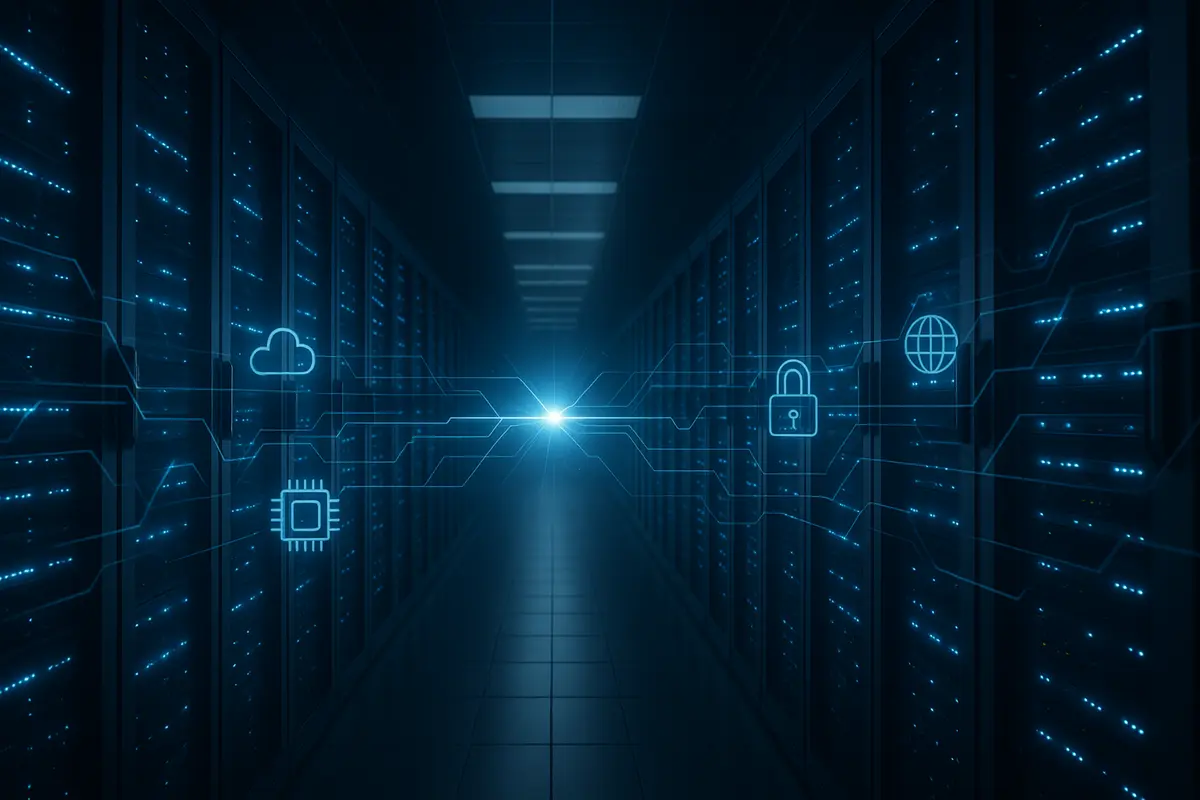How Data Centers Work: The Digital Heart of the Modern World

In this digital age, we heavily rely on data. From sending emails, streaming videos, and accessing social media, to running complex business applications, all involve a massive flow of data. By 2023 alone there were 5.3 billion internet users and 3.6 networked devices per capita globally, highlighting the sheer volume of data being transmitted and processed daily.
But have you ever wondered where all this data is stored and how it’s processed so quickly? The answer lies in a sophisticated facility called a Data Center.
Understanding how data centers work is important, not only for IT professionals but also for anyone who wants to know more about the infrastructure supporting our digital lives. Let’s dive deeper.
What is a Data Center?
Simply put, a data center is a physical facility used by organizations to house their critical applications and data. Imagine a large building filled with server racks, storage systems, networking equipment, and various supporting infrastructures. A data center is the brain and heart of digital operations, ensuring data can be accessed, processed, and distributed efficiently and securely.
Key Components in How Data Centers Work
To understand how data centers work, we need to be familiar with their main components:
- Servers: These are high-performance computers that run applications, store data, and perform various computational tasks. Thousands of servers can be placed in racks within a data center.
- Storage Systems: Hardware devices like Hard Disk Drives (HDDs), Solid State Drives (SSDs), Storage Area Networks (SAN), and Network Attached Storage (NAS) are used to store massive volumes of data permanently and securely.
- Networking Equipment: This includes routers, switches, firewalls, and cables that connect all the servers and storage systems, and also connect the data center to the internet or the organization’s internal network. This equipment manages data traffic.
- Supporting Infrastructure:
- Power: Uninterruptible Power Supply (UPS) systems, backup generators, and sophisticated power distribution systems ensure a stable and continuous electricity supply, even during main power outages.
- Cooling: Servers and other IT equipment generate significant heat. Precision cooling systems like HVAC (Heating, Ventilation, and Air Conditioning) and CRAC (Computer Room Air Conditioner) maintain optimal temperature and humidity to prevent overheating.
- Physical Security: Restricted access, CCTV cameras, biometric sensors, and security guards protect the facility from unauthorized access.
- Cybersecurity: Advanced firewalls, Intrusion Detection/Prevention Systems (IDS/IPS), and other security protocols protect data from cyber threats.
How Does a Data Center Actually Work?
After getting to know the components, let’s look at how data centers work as a whole:
- Data Reception: Data enters the data center through high-speed network connections. This could be requests from users accessing a website, transaction data from an e-commerce system, or data from IoT sensors.
- Traffic Routing: Networking devices like routers and switches will direct the incoming data to the appropriate server or storage system. Load balancers may be used to distribute the workload evenly across multiple servers to prevent overload.
- Data Processing: Servers will process the data according to the request. This could involve running application code, performing calculations, retrieving data from a database, or other computational tasks.
- Data Storage & Retrieval: If data needs to be stored, servers will write it to the storage system. If existing data is needed, servers will retrieve it from the storage system. This process must be fast and reliable.
- Data Transmission: After processing, the data or the processing results are sent back through the network to the user or system that requested it.
- Management & Monitoring: IT teams or automated systems constantly monitor the performance of all data center components. This includes temperature, power usage, network traffic, server performance, and security status. If there’s an issue, alert systems notify technicians for immediate action.
- Redundancy and Failover: To ensure high service availability (uptime), data centers are designed with redundancy. This means there are backup components for critical systems like power, cooling, and even servers or network connections. If one component fails, the failover system automatically switches to the backup component without disrupting service.
- Scalability: Modern data centers are designed to be easily scalable. This means computational, storage, and network capacity can be increased or decreased as business needs grow.
Types of Data Centers
There are several types of data centers, whose workings may vary slightly depending on their purpose:
- Enterprise Data Centers (On-Premise): Owned and operated by a single organization for their internal needs.
- Colocation Data Centers: Companies lease space, power, and cooling from a data center facility provider but own and manage their own servers and IT equipment.
- Hyperscale/Cloud Data Centers: Massive facilities operated by large cloud service providers like AWS, Google Cloud, and Microsoft Azure. They offer IT resources as a service (IaaS, PaaS, SaaS).
- Edge Data Centers: Smaller, decentralized facilities located closer to end-users to reduce latency and improve data processing speed for applications like IoT and edge computing.
Why Understanding How Data Centers Work is Important
Understanding how data centers work helps us appreciate the complexity behind the digital services we enjoy every day. The reliability, speed, and security of data centers are the foundation for technological innovation, digital economy growth, and operational efficiency for businesses across various sectors.
Without properly functioning data centers, the digital world as we know it wouldn’t be possible. They are the unsung heroes working tirelessly, 24/7, to keep our data safe, accessible, and always available.
Conclusion
How data centers work is a complex orchestration of sophisticated hardware, intelligent software, and strict protocols. From servers processing trillions of bytes of data to cooling systems maintaining optimal temperatures, every element plays a crucial role. As the global demand for data continues to grow, the role of data centers will become even more vital in shaping our digital future.
Interested in reliable and efficient data center solutions? Visit EDGE DC to learn how we can support your digital infrastructure needs.

